- Home
- TV History
- Network Studios History
- Cameras
- Archives
- Viewseum
- About / Comments
Skip to content
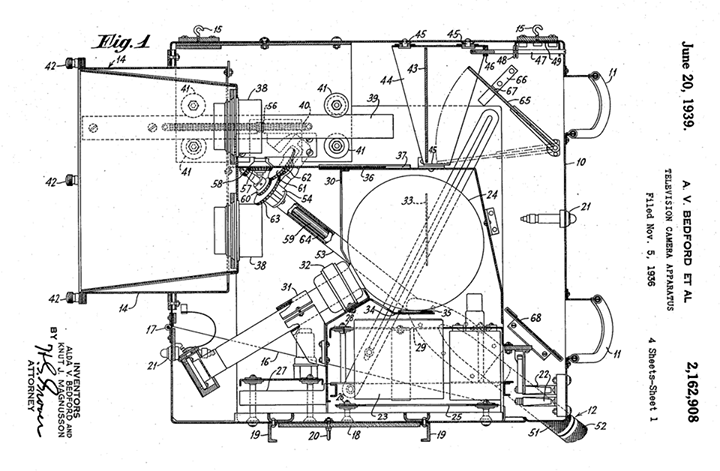

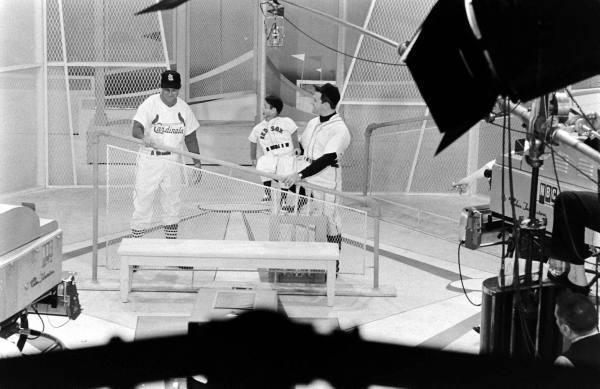

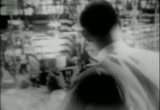

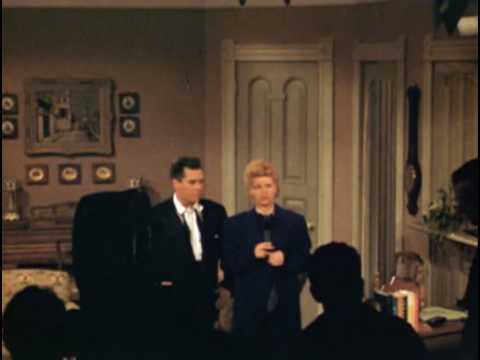



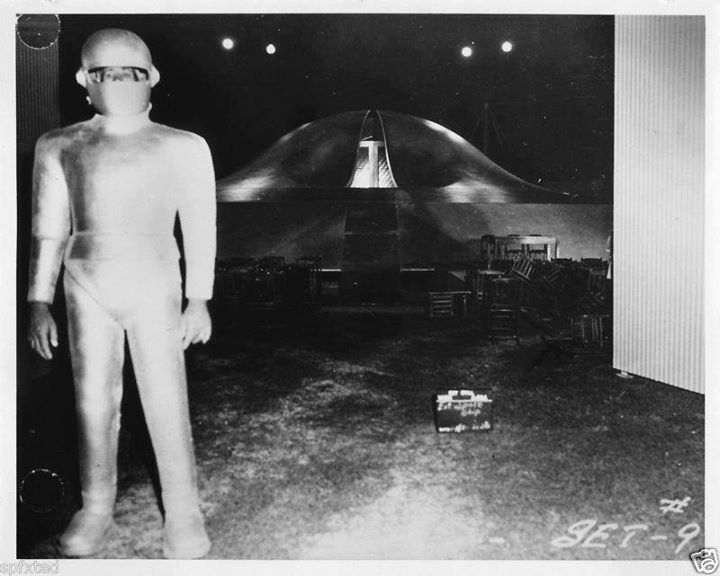

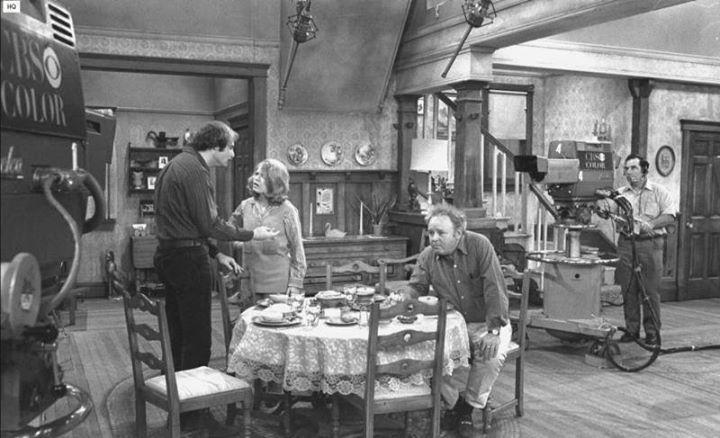

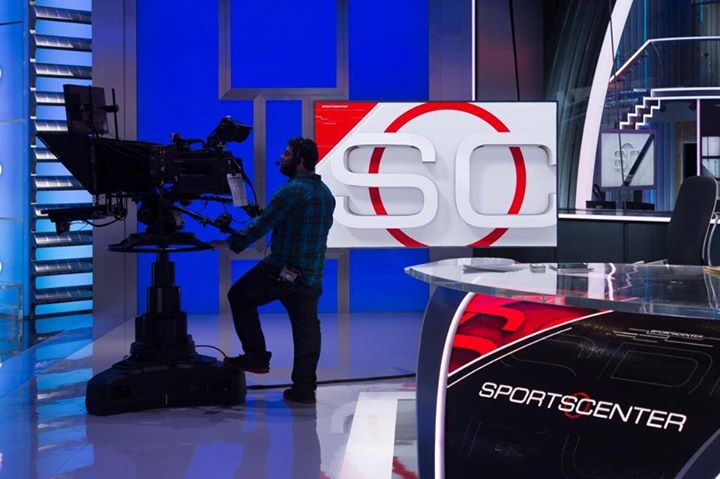

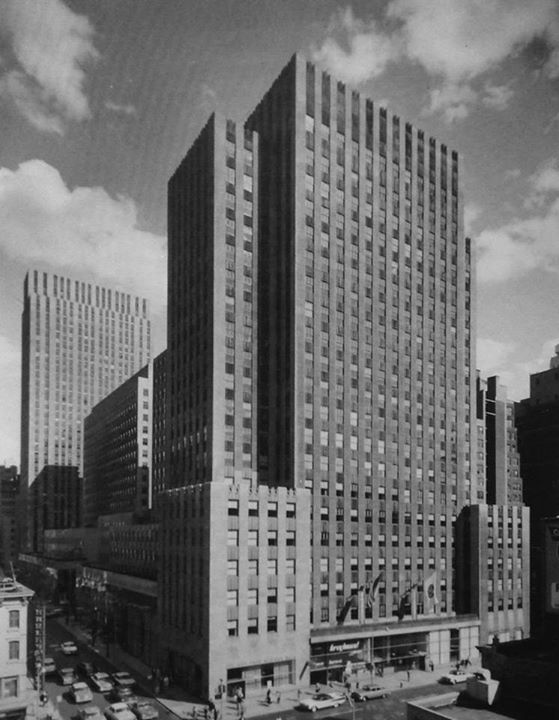

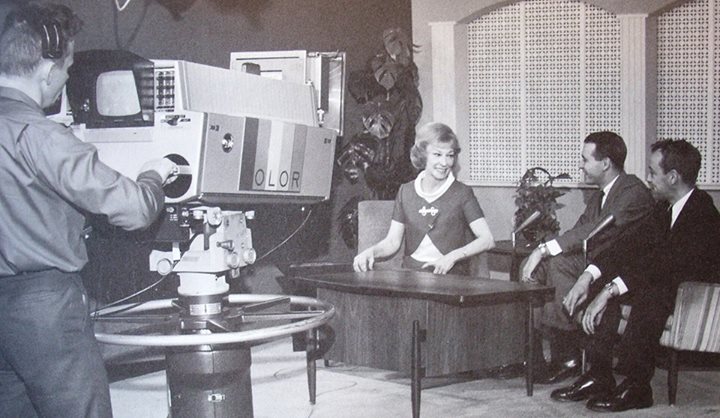

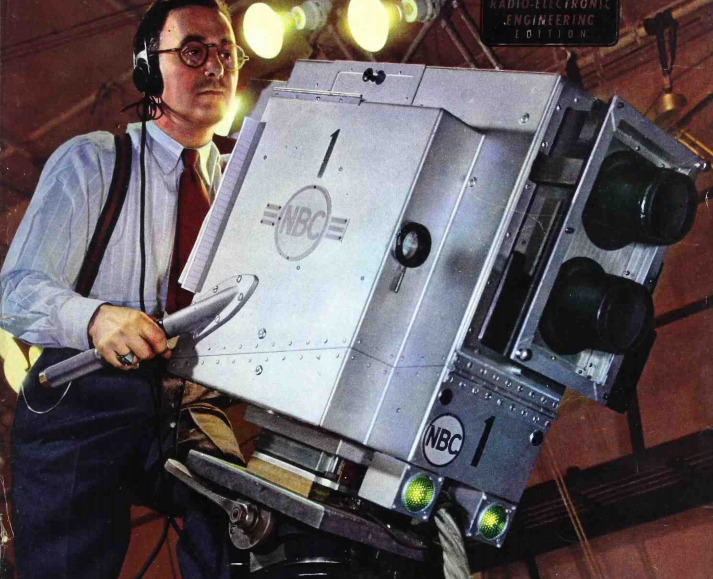

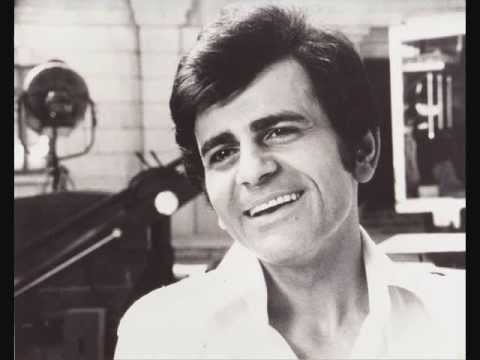

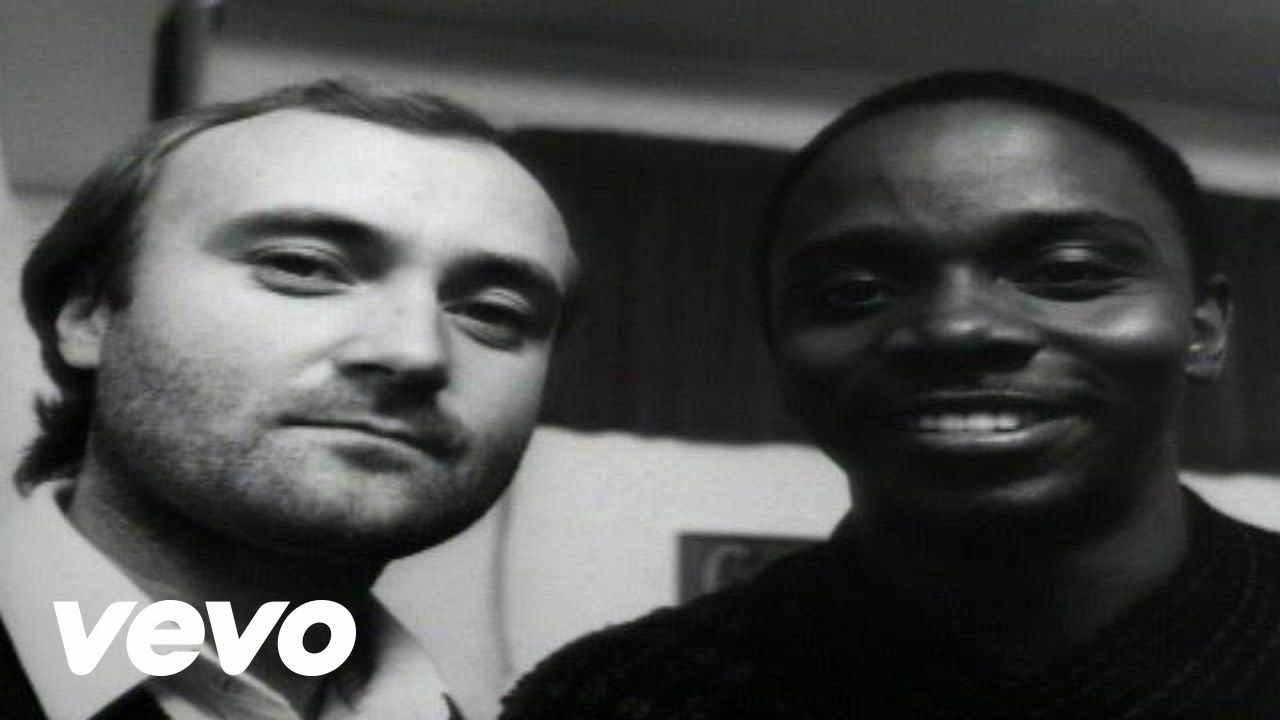

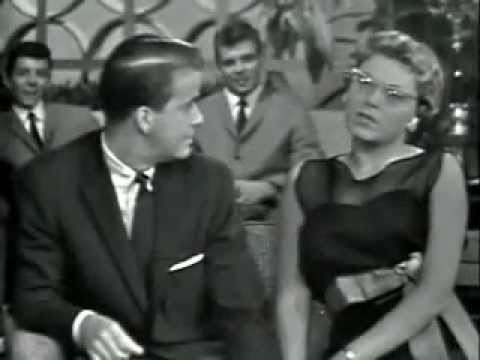

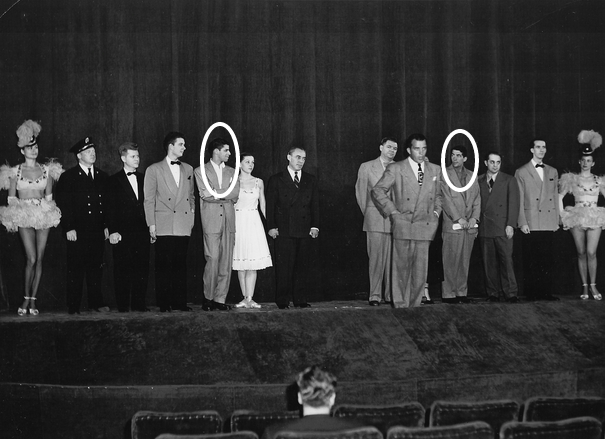

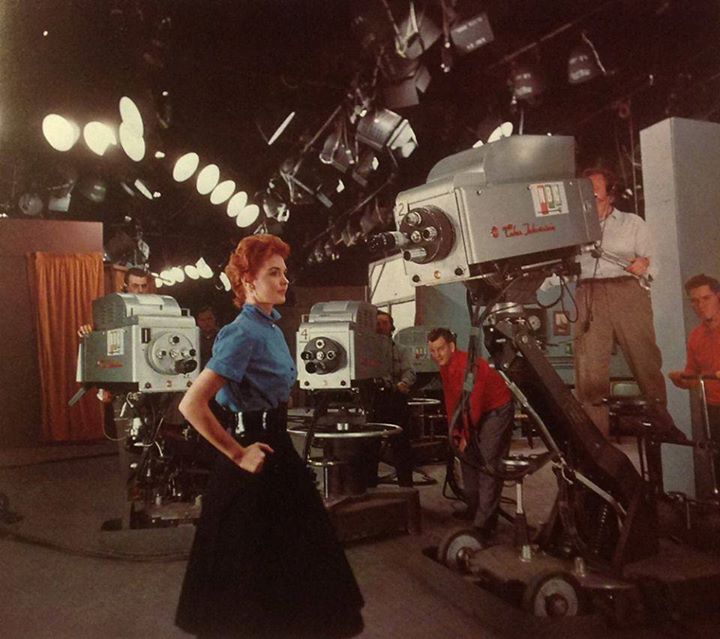

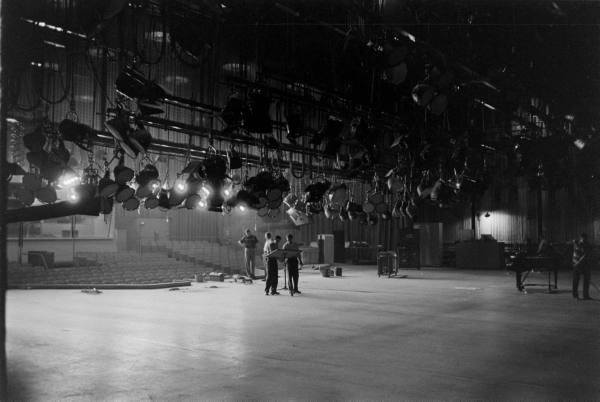

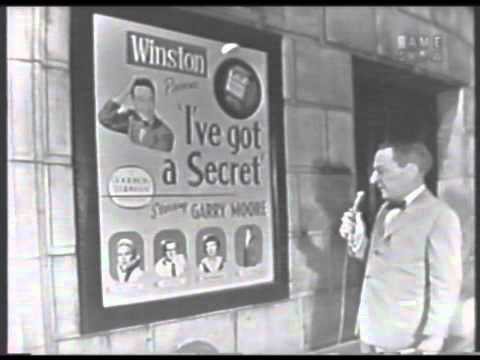





Posts in Category: TV History
Page 75 of 136
« Previous
1
2
3
4
5
6
7
8
9
10
11
12
13
14
15
16
17
18
19
20
21
22
23
24
25
26
27
28
29
30
31
32
33
34
35
36
37
38
39
40
41
42
43
44
45
46
47
48
49
50
51
52
53
54
55
56
57
58
59
60
61
62
63
64
65
66
67
68
69
70
71
72
73
74
75
76
77
78
79
80
81
82
83
84
85
86
87
88
89
90
91
92
93
94
95
96
97
98
99
100
101
102
103
104
105
106
107
108
109
110
111
112
113
114
115
116
117
118
119
120
121
122
123
124
125
126
127
128
129
130
131
132
133
134
135
136
Next » Follow Up…Inside The RCA A500 Iconoscope Camera
On June 24, 2014
- TV History
Follow Up…Inside The RCA A500 Iconoscope Camera
A few days back, I posted a rare color photo of the RCA A500 in use in NBC’s Studio 3H in the early 1940s. Here is the patent application diagram that shows the inside of the camera. On the left is the lens housing and on the right, the rear of the camera with it’s dual viewfinder ports.
The reason it had two viewfinder ports was so that when the camera was high, the operator could still see the image. Notice item 65…it’s a flip up mirror that reflects the image to the bottom viewfinder port when needed. With the mirror down, the image comes to the top optical (non electronic) port and with it up, it acts like a periscope.
You can also see the focus mechanism detail and the Iconoscope tube in the middle. This was filed in November of 1936, just three years after electronic television testing began in Studio 3H and at that time, the cameras there were dark colored, but had the same body style. I suspect this is the first patent on the RCA studio cameras (that were different from the field versions), and incorporates updates to the earlier dark cameras. Most likely, this was done in conjunction with the addition of a higher resolution tube which would have either been the jump to 440 or 525 lines from the old 220 line Iconoscope tubes.
Live From NBC’s Colonial Theater…’Saturday Color Carnival’, 1957
On June 24, 2014
- TV History
Live From NBC’s Colonial Theater…’Saturday Color Carnival’, 1957
After months of searching, I finally know the story behind this fabulous photo array! This is NBC’s ‘Saturday Color Carnival: A Salute To Baseball’! This was done live from the Colonial Theater in the early spring of 1957. I think the cameras are the original four RCA TK40s that arrived in late 1952, but notice that only a couple have the updated TK41 style vented viewfinder covers.
The lineup of star players is astounding! Emceed by Gene Kelly, the 90-minute extravaganza brings together dozens of special guests from Baseball and Showbiz to commemorate in song, sketch and story, the opening of the 1957 baseball season.
Among the special’s many highlights: The introduction of 1956’s MVPs, Mickey Mantle and Don Newcombe; comedy playlets starring the likes of Robert Alda (father of Alan Alda) and Ed Gardner of Duffy’s Tavern radio fame; songs performed by Janis Paige, Tony Bennett, and ventriloquist Paul Winchell (with the help of dummy Jerry Mahoney); a “dream outfield” segment built around Stan Musial, Leo Durocher and Ted Williams; a “baseball rock-n-roll” specialty sung by Bill Hayes; old-time baseball newsreel clips, narrated by radiocaster Mel Allen; and a special closing message, delivered by then-Commissioner of Baseball Ford Frick (long before his vilification as the architect behind the “asterisking” of Roger Maris’ 61st homer.
After months of searching, I finally know the story behind this fabulous photo array! This is NBC’s ‘Saturday Color Carnival: A Salute To Baseball’! This was done live from the Colonial Theater in the early spring of 1957. Notice a couple of the cameras are RCA TK40s and a couple are TK41s. The lineup of star players is astounding!
Emceed by Gene Kelly, the 90-minute extravaganza brings together dozens of special guests from Baseball and Showbiz to commemorate in song, sketch and story, the opening of the 1957 baseball season. Among the special’s many highlights: The introduction of 1956’s MVPs, Mickey Mantle and Don Newcombe; comedy playlets starring the likes of Robert Alda (father of Alan Alda) and Ed Gardner of Duffy’s Tavern radio fame; songs performed by Janis Paige, Tony Bennett, and ventriloquist Paul Winchell (with the help of dummy Jerry Mahoney); a “dream outfield” segment built around Stan Musial, Leo Durocher and Ted Williams; a “baseball rock-n-roll” specialty sung by Bill Hayes; old-time baseball newsreel clips, narrated by radiocaster Mel Allen; and a special closing message, delivered by then-Commissioner of Baseball Ford Frick (long before his vilification as the architect behind the “asterisking” of Roger Maris’ 61st homer.


A Half Hour Behind The Scenes Of Television…January 1952
On June 24, 2014
- TV History, Viewseum
A Half Hour Behind The Scenes Of Television…January 1952
If you ever wondered how different, or the same, television production was back in the ’50s, here’s your chance to find out. This is a very thorough look at how ‘The John Hopkins Science Review’ program was done at Baltimore’s WAAM.
The tour starts in the control room with ample demonstrations and moves to the studio where RCA TK30s are capturing the scenes we see now on this kinescope recording. This is an early DuMont program and was originally shown on January 7, 1952.


Ultra Rare Backstage Footage…’I Love Lucy’
On June 24, 2014
- TV History, Viewseum
Ultra Rare Backstage Footage…’I Love Lucy’
What you will see here is an expertly edited combination of actual production footage and 8mm color home movie footage that was somehow shot by an audience member.
This all takes place the evening of October 12, 1951, at Sound Stage 2 of General Services Studios in Hollywood. The episode filmed that night was the sixth episode the first season, titled “The Audition”. This show was a remake of the “I Love Lucy” pilot episode, which was presumed lost until 1990.
Photography on the set was forbidden, but somehow this got done and I’m glad it survived. Enjoy and share.
Rare Layouts Of NBC’s First Studios…711 5th Avenue
On June 23, 2014
- TV History
Rare Layouts Of NBC’s First Studios…711 5th Avenue
In 1925, RCA spent $1 million to buy New York’s WEAF Radio from AT&T and shortly after bought WJZ . In late 1926 RCA announced the creation of a new division known as The National Broadcasting Company. The new division was divided in ownership among RCA (50 percent), General Electric (30 percent), and Westinghouse (20 percent). NBC officially launched on November 15, 1926 when control of the stations moved from RCA to NBC.
In 1927, NBC moved from their offices at WEAF and WJZ to a specially designed space at 711 5th Avenue. The studios occupied the 12th and 13th floors and as you can see in the images below, most of the large studio were two story affairs. There were seven studios labeled from A to G. Thanks to Joel Spector for these rare artifacts. Enjoy and share!
“Gort! Klaatu Barada Nikto!”
On June 23, 2014
- TV History
“Gort! Klaatu Barada Nikto!”
Just for fun, here is a rare production shot from the 1951 classic ‘The Day The Earth Stood Still’. Peeking out of the forty pound Gort costume is 7′ 7″ Joseph “Lock” Martin. Before the film rolls, wardrobe will add his visor and gloves. Martin could only handle a half hour at a time in the suit because of it’s weight and inflexibility. There were two versions of it…the one he is wearing here has the lace up on the back for front shots, the other laced up the front for back shots.
Principal photography for the movie was done on the 20th Century Fox sound stages and on its studio backlot, with a second unit shooting background plates and other scenes in Washington DC and at Fort Meade in Maryland. The primary actors never traveled to Washington.
‘All In The Family’…A Rare Shot On The Set
On June 23, 2014
- TV History
‘All In The Family’…A Rare Shot On The Set
Oddly, there are very few pictures of this show in production and this is one I just recently found. I think this is from the first or second season which came from CBS Television City Studio 31. Starting with season three, the show began to alternate between studios 31 and 41. The cameras are early Norelco PC60s as you can tell by the original zoom servo cable on the side of the camera on the left, and the double cables on the other. Enjoy and share!
Tonight’s The Night At ESPN…DC 2 Goes Live
On June 22, 2014
- TV History
Tonight’s The Night At ESPN…DC 2 Goes Live At 11
Tonight at 11, the brand new 194,000-square-foot, five-studio media center called Digital Center 2 goes live. ESPN’s current studio was built in 2004…it’s just a decade old and already is being treated as outdated. There’s more at the link to this Boston Globe story and at the ESPN link below. Thanks to ESPN’s Ray Balton for the heads up.
http://frontrow.espn.go.com/2014/06/serious-new-sportscenter-set-seriously-debuts-sunday/
Goodby Center Theater…Hello US Rubber Building
On June 22, 2014
- TV History
Goodby Center Theater…Hello US Rubber Building
In 1950, The Center Theater became an NBC television theater and was heavily used till it closed and was demolished in 1954 to allow US Rubber to expand their Rockefeller Center offices. Thanks to Jodie Peeler, here are couple of interesting photos from 1959 that show the new 19 story US Rubber headquarters.
In the lower left of the wide shot, you can see the sign for New Yorks famous Hurley’s Bar. At the corner on the other side of 49th street is where the Center Theater was. It was about half the size of it’s sister Radio City Music Hall which is a block north on 50th Street. The Center Theatre was located at 1230 Sixth Avenue, the northeast corner of West 49th Street in Rockefeller Center.
In the close up, you can look down 49th street and see where the ‘Today’ show started in 1952. The space just over the Hurley’s sign was the RCA Exhibition Hall where the show originated. The show now comes from the space just behind that TV antenna in Studio 1A.
Seating 3500, The Center opened as an RKO theater in 1932 and later achieved fame as a showcase for live musical ice-skating spectacles. After only twenty one years, The Center Theatre became only building in the original Rockefeller Center complex to have been torn down.
Bob Jones University purchased the stage lifts and turntables from the Center Theatre and reassembled them in its Rodeheaver Auditorium, where the mechanisms are still in use today.
A Little Local Color…WSB TV, Atlanta December 16, 1965
On June 22, 2014
- TV History
A Little Local Color…WSB TV, Atlanta
On Thursday, December 16, 1965, WSB broadcast it’s first local color show with one RCA TK42. The show was ‘Today In Georgia’ hosted by television and radio veteran Ruth Kent. TIG aired at 9AM weekdays and was on for many years…I remember it well. By the way, I think WSB could transmit network color as early as 1957, but did not have local color origination ability till ’65.
WSB was Georgia’s first broadcaster of radio and television and an NBC affiliate until 1980, so they were on board with NBC’s decision to go all color in ’65. I think RCA may have helped this along. Because ‘The Popeye Club With Officer Don’ (Kennedy) was the top afternoon kids show outside NYC, RCA wanted to use the TK42 on it and the video tape of segments as a sales tool and demonstration.
I think this was the first field test of the new TK42 so WSB got a couple of the first ones off the line. The color of the kid’s clothes and the new set would be a perfect, hour long daily test of the camera but the camera was not the only thing tested. So were many nerves. It took months to get the color right and a couple of RCA techs stayed in Atlanta till they got the bugs worked out. Thanks to Bob Foreman for the picture and clipping.
Ultra Rare Closeup…The RCA A500 Iconoscope Camera
On June 22, 2014
- TV History
Ultra Rare Closeup…The RCA A500 Iconoscope Camera
This magnificent color photo was taken in NBC Studio 3H in the early 1940s. (Be sure and see the Comment Section of this post for more pix and video.) More on the cameras in this studio in a moment, but first…let’s take a good look at this. Starting at the front bottom we see dual green tally lights which were the “camera ready” lights and a few inches above them are smaller ruby red lights which are the “camera on” lights, meaning the camera with the red tallies was on the air. Between the red tallies is the camera’s number and this is 1 of only 3 A500s ever made. I wonder what happened to them?
For the first time, we can see that the interchangeable lens rack is held in place by two thumb screws in the lower left and upper right corners with several guide pins to help in quick changes, and changes were made while on the air. The only zoom available was to move the camera in and out on it’s pedestal or dolly, but there were close up, wide angle and other lens pairs available that the utility man could quickly change out during a broadcast.
The top lens feeds the ground glass optical viewfinder and the bottom lens feeds the Iconoscope tube (more on this in the comments section below). The dual lens frame is attached to the focus mechanism and focus is controlled by the pan handle you see the cameraman holding. The pan handle on the other side was just for stability and had no demand function.
Just under the lenses, you can see the hinge and along the side of the camera a line with rivets above and below it. This camera opens from the back and the top flips up much like the cabs of the old style transfer trucks and the line we see is where the top and bottom come together. I think the round object to the left of the bottom lens is a peep hole that you can look in to see the image on the face of the Iconoscope tube, and you could see it clearly while the camera was in operation.
As I mentioned above, there were only three of these A500 cameras ever made and used, and they were all in Studio 3H. On the outside, these cameras are identical to their predecessors for which we have no name. The cameras used before this were painted a dark color and may have been the first pieces of equipment RCA painted with their now famous umber gray. It is quite possible that these silver cameras are in fact the same camera bodies with different insides.
Resolutions for electronic television changed several times before they got to the 525 lines that these cameras used. I think the first 3H cameras (the dark colored ones) started with 220 lines and went to 440 lines. I think the camera overhaul and chais color switch came with the move from 440 to 525. The A500 name may be a shorthanded designation.
As for the history of the cameras in NBC’s 3H, they went directly from this camera to the RCA TK30s in the summer of 1946. Although the RCA Orthicon cameras debuted June 8, 1939, they were never used in 3H. Below in comments, I am posting photos from the July 1, 1945 broadcast of “Copperhead” which shows the A500s in use in 3H. Also posted below is a shot of the upside down viewfinder set up which must have driven operators crazy because left was right and up was down. This photo was so great that I wanted you to see it in all it’s glory so that’s why the other photos are in comments. Enjoy and share!


The Famous Casey Kasem Rant…XXX Rated Audio
On June 21, 2014
- TV History
The Famous Casey Kasem Rant…XXX Rated Audio
I first heard this in 1982 when I was on the air at Atlanta’s 96 Rock. Our morning man was the person the ‘WKRP’ character Dr. Johnny Fever was based on…Skinny Bobby Harper. Bobby played it for me in the production studio and we laughed till we couldn’t breathe.
Most radio people have copies of this we’ve had for years on reel to reel and cassettes. Usually on the same tape are the incredible outtakes from ABC’s Ernie Anderson. If you think Casey can cuss a blue steak, wait till you hear Ernie!
This is cued to start at the now famous “Snuggles” bit, but the five minutes before it are action packed too! In all honesty, I too have a pretty salty vocabulary and have been known to lay it out like this, but if you are sensitive to hard core cussing, you should skip this as it covers about 5 of the 7 “forbidden words”.
http://youtu.be/seCkv_aqSF8?t=5m22sUnlike the other extended compilation on Youtube, this one is without anyone talking or laughing over it. Seems like a lot of people were ticked off about th…


“Easy Lover”…The Making Of A Music Video, 1984 Style
On June 21, 2014
- TV History
“Easy Lover”…The Making Of A Music Video, 1984 Style
Here’s Phil Collins and Earth, Wind And Fire lead singer Phillip Bailey recording their 1984 duet in London. I think these are Ikegami 323 model cameras. The song was released in the US in November of ’84 and in the UK in February of ’85. “Easy Lover” won an MTV Video Music Award for Best Overall Performance in a Video in 1985 and was Grammy nominated for Best Pop Performance by a Duo or Group With Vocals that year too.
Where were you when this song came out? What were you doing? I was playing it on the radio in Miami. I was the original afternoon drive air personality on the country’s first HOT formated station, WHQT, Hot 105. Thanks to Juan Leal for sharing this.
https://www.youtube.com/watch?v=JkRKT6T0QLg
Music video by Philip Bailey Duet with Phil Collins performing Easy Lover. (C) 1984 Sony BMG Music Entertainment


‘This Is Your Life’…Dick Clark, June 24, 1959
On June 21, 2014
- TV History
‘This Is Your Life’…Richard Wagstaff Clark, June 24, 1959
Fifty seven years ago this week, America got it’s first good look at Dick Clark…their favorite television disc jockey, with the help of Andy Williams, Fabian, Connie Francis and Frankie Avalon. You’ll also meet Dick’s family and the many of the WFIL people that helped launch his dazzling career. This is quite a history lesson and the text accompanying the clip is also a quite detailed bio. Enjoy and share!
https://www.youtube.com/watch?v=kv8HlKQTFjc
Richard Wagstaff “Dick” Clark (November 30, 1929 — April 18, 2012) was an American radio and television personality, best known for hosting American televis…
June 20, 1948…Ed Sullivan’s CBS TV Debut, ‘Toast Of The Town’
On June 20, 2014
- TV History
June 20, 1948…Ed Sullivan’s CBS TV Debut, ‘Toast Of The Town’
Before there was ‘The Ed Sullivan Show’, there was ‘Toast Of The Town’ which debuted on this date 66 years ago today. This is a very rare photo from that first show which aired from 9 till 10, Sunday nights live from CBS Studio 51, The Maxine Elliott Theater.
In the photo below you see the guests for this premiere show at the finale, and in the white circles are two people you may recognize. Do you know who that is? I’ll tell you in a second, but some of the others on that stage are Richard Rogers and Oscar Hammerstein II, six June Taylor Dancers who were dubbed The Toastettes, John Cocoman, Rudy Goldstein, Kathryn Lee, Eugene List and Monica Lewis, wife of the shows creator and producer Marlo Lewis. Speaking of Lewis…yes that’s Jerry Lewis on the left and Dean Martin on the right. Enjoy and share!
Television History…In Stunning Living Color! Ultra Rare Details!
On June 20, 2014
- TV History
Television History…In Stunning Living Color! Ultra Rare Details!
I’ve seen this image before, but never with such literal and figurative clarity. Let me tell you the secrets this pristine color photo reveals.
First, this is the first color photo taken at RCA and NBC’s first non experimental color studio…The Colonial Theater. It is also among the first taken there and I would bet this picture was taken no later than January of 1953, or within eight weeks of the cameras arrival in late October. The first Colonial broadcast was November 8, 1952 and the program was a special edition of ‘Your Show Of Shows’ which was shown on NBC in black and white and was done as a facility test.
Second, this settles the long debated question of whether there were three RCA TK40s delivered, or were there four? As we can see here…there were four.
Notice the lens turrets on Cameras 2 and 4. They are the same umber gray semi gloss used on the RCA TK10s. These four cameras were not built on an assembly line…they are prototypes built individually and in the past, I have shown you a photo of one of these cameras being built and the camera body was painted this same umber gray. The silver coat must have been a last minute change, but we know that in 1951, one of the four experimental “coffin cameras” from Studio 3H had been painted silver to better reflect the suns heat after one almost overheated at a Palisades Park remote. This is the only photo that shows these turrets in umber as all the other Colonial photos have the turrets painted silver.
We are also seeing two support hardware firsts in this photo. Notice the large center steering rings on the two cameras mounted on the RCA PD 1 pedestals. In the first couple of weeks of use, the cameramen had two complaints…the regular PD 1 steering ring was too small for such a big camera which Houston Fearless fixed quickly with these larger rings.
The second problem was that the camera were to heavy for the regular friction type pan heads. Within a month, Houston Fearless had a fix for this, and under Camera 2, you see the prototype HF Cradle Head. After they put this under the camera, they realized that there was still too much weight under the center plate (as was the case with the friction head), and developed the larger model custom made for the TK40/41s. The Cradle Heads were in development for use under black and white cameras, but there was only one actually built and it’s this one. I’ve seen this from the other side and there are no brake or tension knobs…yet. The HF Cradle Heads for b/w debuted in early ’54 at the same time RCA took the TK40 to the production line.
The lady in the photo is NBC’s long time color model, Marie McNamara. Marie spent more time in front of NBC’s color cameras than any of their stars ever did. When color testing was moved from Washington to Studio 3H, she had been hired as one of the small group of performers to do a show four times a day for color tests. Nanette Fabray was the lead performer of the show that was carried via closed circuit to RCA in Princeton and Camden, scrutinized by engineers at 30 Rock and finally fed into color receivers viewed by the public at the RCA Exhibition Hall on 49th Street, directly across from 30 Rock.
Her red hair and beautiful complexion made Marie the perfect color model and she was did this for many years. I think she started in 1951 and stayed till around 1958. There is a story that she had so much overtime, she was making more per week than many of NBC’s executives. On that discovery, she was put under contract on a fixed salary.
Thank you Jodie Peeler for sending this great image. This came from the 1961 edition of “Rockefeller Center: A Photographic Narrative,” edited by Samuel Chamberlain. Enjoy and share!
CBS Television City: Studio 31, 1960
On June 19, 2014
- TV History
CBS Television City: Studio 31, 1960
I’ve been meaning to post this since the great ‘Price Is Right’ videos a week or so ago. Although TPIR is done in Studio 33, 31 was a mirror image until the audience area was filled in 1961.
The audience capacity of each…31 and 33 was 347. The Net Total Production Area for each was 5,564 square feet…this is stage space. Both are 109 X 109 wall to wall. After the seats were taken out of 31, the Net Total Production Area went to 9,087 square feet.
In 1961, both were equipped with 5 Marconi Mark IV cameras each and the studios had the ability to operate 6 telecine banks and 4 video tape machines from their control rooms. The Television City phone number was Olive 1 – 2345. The extensions to the backstage phones were 311 for Studio 31 and 331 for Studio 33.
Color could be done from either studio using control rooms 41 or 43. Studio 41 had 3 RCA TK40s and 43 had 3 RCA TK41s.
Look at the size of this stage. Looks a lot smaller on television. Interesting to see the wear marks on the floor where most of the backdrops land. Enjoy and share!


‘I’ve Got A Secret’…Tour Of CBS Studio 59, June 17, 1959
On June 19, 2014
- TV History
‘I’ve Got A Secret’…Tour Of CBS Studio 59, June 17, 1959
Fifty five years ago this week, ‘I’ve Got A Secret’ was celebrating it’s seventh anniversary on the air at CBS. To mark the occasion, Garry Moore takes us on a tour of The Mansfield Theater, better known to us as CBS Studio 59 at 256 West 47th Street. As you’ll see, CBS Studio 62, The Biltmore Theater is across the street at 261 West 47th Street. Enjoy and share!
https://www.youtube.com/watch?v=WTfjSbk8tdU
The 7th anniversary episode opens with a tour of the theater on 47th Street.


Move Over Bob Barker…There’s A New Champion In Town!
On June 19, 2014
- TV History
Move Over Bob Barker…There’s A New Champion In Town!
This past Friday, Alex Trebek set the record for hosting the most game show episodes. Until then, that distinction had been Bob Barker’s. At the embedded clip is ABC’s story on the event and at the clip link below, Trebek talks about breaking the record as he enters the Guinness Book Of Records.
#t=63″ target=”_blank”>https://www.youtube.com/watch?v=iFKAhx0PQVM #t=63
https://www.youtube.com/watch?v=Kw6Dvpq0wM0
After the show came back in 1986, it has been an after dinnertime and news favorite for the many generations.
Television’s First Rate Card…July 1, 1941
On June 18, 2014
- TV History
Television’s First Rate Card…
July 1, 1941 is the day NBC’s experimental station, W2XBS began commercial broadcasting as WNBT, New York.
The call letters W2XBS meant W2XB-south, with W2XB being the call letters of the first experimental station, started a few months earlier at General Electric’s main factory in Schenectady, which is north of New York City. W2XB became WRGB. GE was the parent company of both RCA and NBC, and technical research was done at the Schenectady plant from 1928 till 1933.
In ’33, RCA converted one of the new Rockefeller Plaza radio studios, 3H, to a television test studio. For the next six years, RCA would control 3H and only relinquished it to NBC in early 1939, just before the World’s Fair.
At the bottom of the card, there are facility rates and note the “large studio” and “small studio” entries. This is actually a little sales magic of sorts. Until 8G came along in 1948, Studio 3H was all there was in the television department. What “small studio” actually meant was a one camera shoot in part of 3H. “Large Studio” would have included use of all three cameras and the full studio.
Page 75 of 136
« Previous
1
2
3
4
5
6
7
8
9
10
11
12
13
14
15
16
17
18
19
20
21
22
23
24
25
26
27
28
29
30
31
32
33
34
35
36
37
38
39
40
41
42
43
44
45
46
47
48
49
50
51
52
53
54
55
56
57
58
59
60
61
62
63
64
65
66
67
68
69
70
71
72
73
74
75
76
77
78
79
80
81
82
83
84
85
86
87
88
89
90
91
92
93
94
95
96
97
98
99
100
101
102
103
104
105
106
107
108
109
110
111
112
113
114
115
116
117
118
119
120
121
122
123
124
125
126
127
128
129
130
131
132
133
134
135
136
Next »